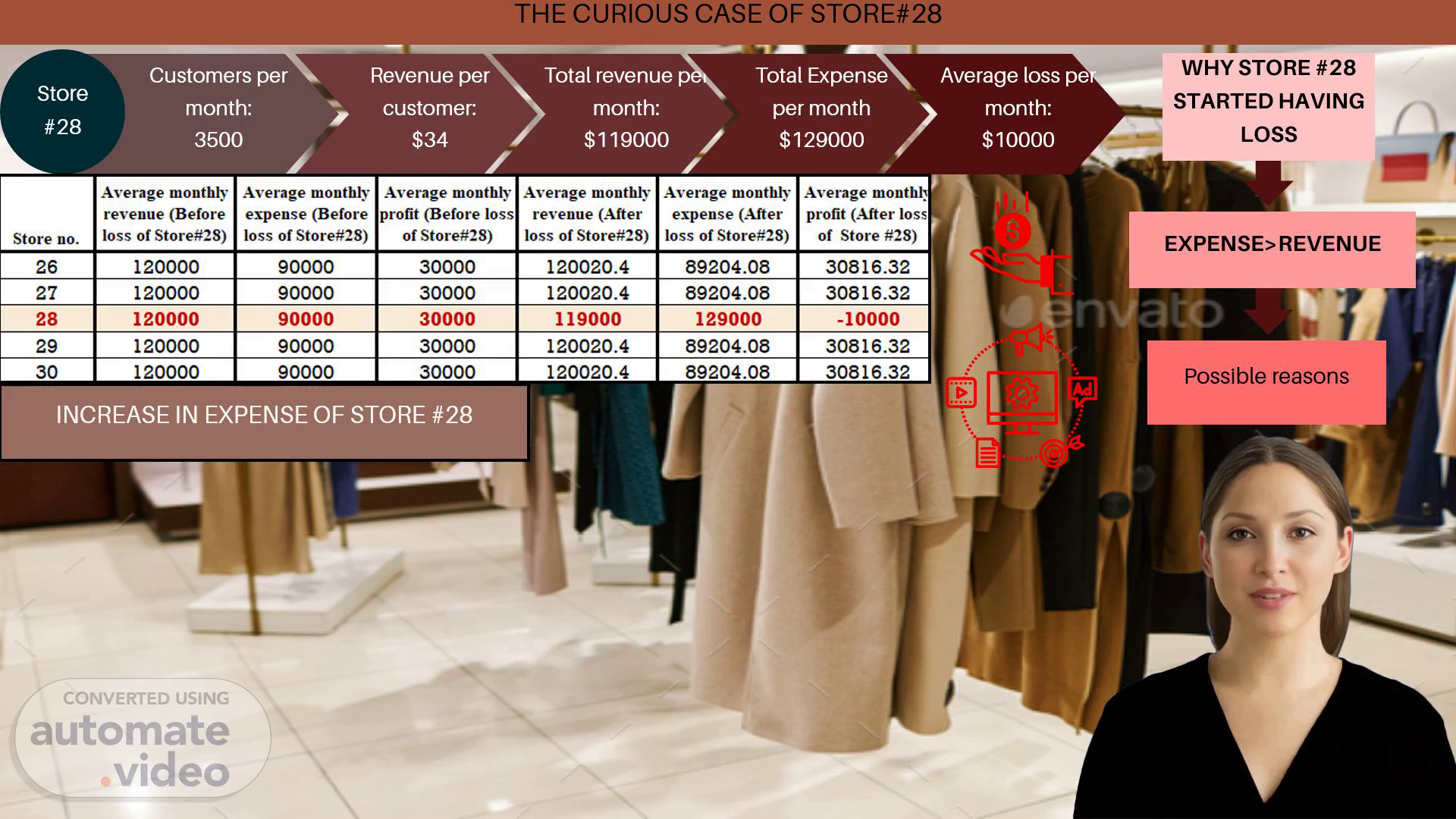Scene 1 (0s)
[Virtual Presenter] We are excited to present to you on the case of Store X, Y, and Z Today, we will be discussing the financial performance of these three stores and how they affect the associated costs of sales. Store X has a monthly revenue of $119000, with an average loss of $10000. Store Y has a monthly revenue of $119000, with an average loss of $10000. And Store Z has a monthly revenue of $119000, with an average loss of $10000. These stores showcase a major financial commitment and are crucial to the business. We will also discuss the increase in expenses of Store X..
Scene 2 (42s)
[Audio] We will be discussing how high marketing costs, customer acquisition costs, and customer engagement costs are impacting the profitability of Stores X, Y and Z Firstly, high marketing costs could be leading to an increase in the total operating costs of these stores, reducing their profitability in the short term. Secondly, stores might be spending a higher amount on acquiring customers but as the average cost per customer remains at $34, this could be a challenge for store owners to manage their costs. Thirdly, stores might be spending a higher amount on engaging with customers to increase sales, but as we know the foot traffic remains the same, this could be a challenge for store owners to manage their costs. Now let's discuss repair or refurbishment. Defective or damaged items may need repairs, refurbishment or disposal. Refunding the full purchase price, including taxes and shipping fees, can lead to direct financial loss for the store. Unsellable returned goods can also be a challenge for store owners. The initial cost of acquisition and setting up of new infrastructure will lead to a substantial increase in the store's expenses. Poor communication or inefficiency in coordination with contractors can delay infrastructure projects, resulting in the need for additional repair or investment. If infrastructure is underutilised, the fixed cost associated with maintaining it remains high while the benefit gained is minimal. In conclusion, store owners need to be aware of these challenges and take steps to address them. By managing their costs and investing in their infrastructure, they can improve the profitability of their stores and ensure their long-term success..
